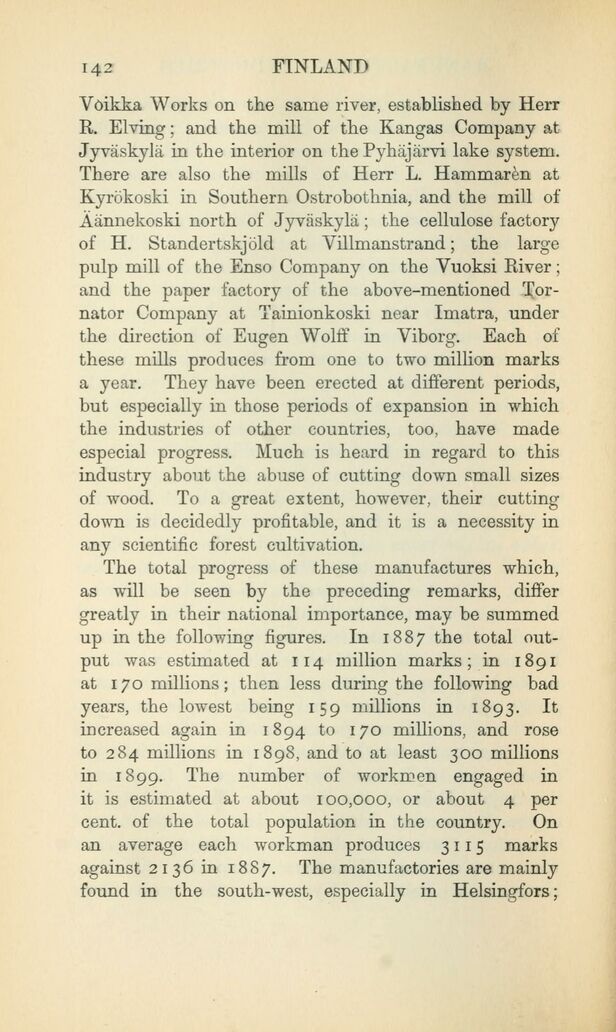
Full resolution (JPEG) - On this page / på denna sida - VI. Mining and Manufacturing Industries

<< prev. page << föreg. sida << >> nästa sida >> next page >>
Below is the raw OCR text
from the above scanned image.
Do you see an error? Proofread the page now!
Här nedan syns maskintolkade texten från faksimilbilden ovan.
Ser du något fel? Korrekturläs sidan nu!
This page has been proofread at least once.
(diff)
(history)
Denna sida har korrekturlästs minst en gång.
(skillnad)
(historik)
Voikka Works on the same river, established by Herr
R. Elving; and the mill of the Kangas Company at
Jyväskylä in the interior on the Pyhäjärvi lake system.
There are also the mills of Herr L. Hammarèn at
Kyrökoski in Southern Ostrobothnia, and the mill of
Äännekoski north of Jyväskylä; the cellulose factory
of H. Standertskjöld at Villmanstrand; the large
pulp mill of the Enso Company on the Vuoksi River;
and the paper factory of the above-mentioned
Tornator Company at Tainionkoski near Imatra, under
the direction of Eugen Wolff in Viborg. Each of
these mills produces from one to two million marks
a year. They have been erected at different periods,
but especially in those periods of expansion in which
the industries of other countries, too, have made
especial progress. Much is heard in regard to this
industry about the abuse of cutting down small sizes
of wood. To a great extent, however, their cutting
down is decidedly profitable, and it is a necessity in
any scientific forest cultivation.
The total progress of these manufactures which,
as will be seen by the preceding remarks, differ
greatly in their national importance, may be summed
up in the following figures. In 1887 the total
output was estimated at 114 million marks; in 1891
at 170 millions; then less during the following bad
years, the lowest being 159 millions in 1893. It
increased again in 1894 to 170 millions, and rose
to 284 millions in 1898, and to at least 300 millions
in 1899. The number of workmen engaged in
it is estimated at about 100,000, or about 4 per
cent. of the total population in the country. On
an average each workman produces 3115 marks
against 2136 in 1887. The manufactories are mainly
found in the south-west, especially in Helsingfors;
<< prev. page << föreg. sida << >> nästa sida >> next page >>